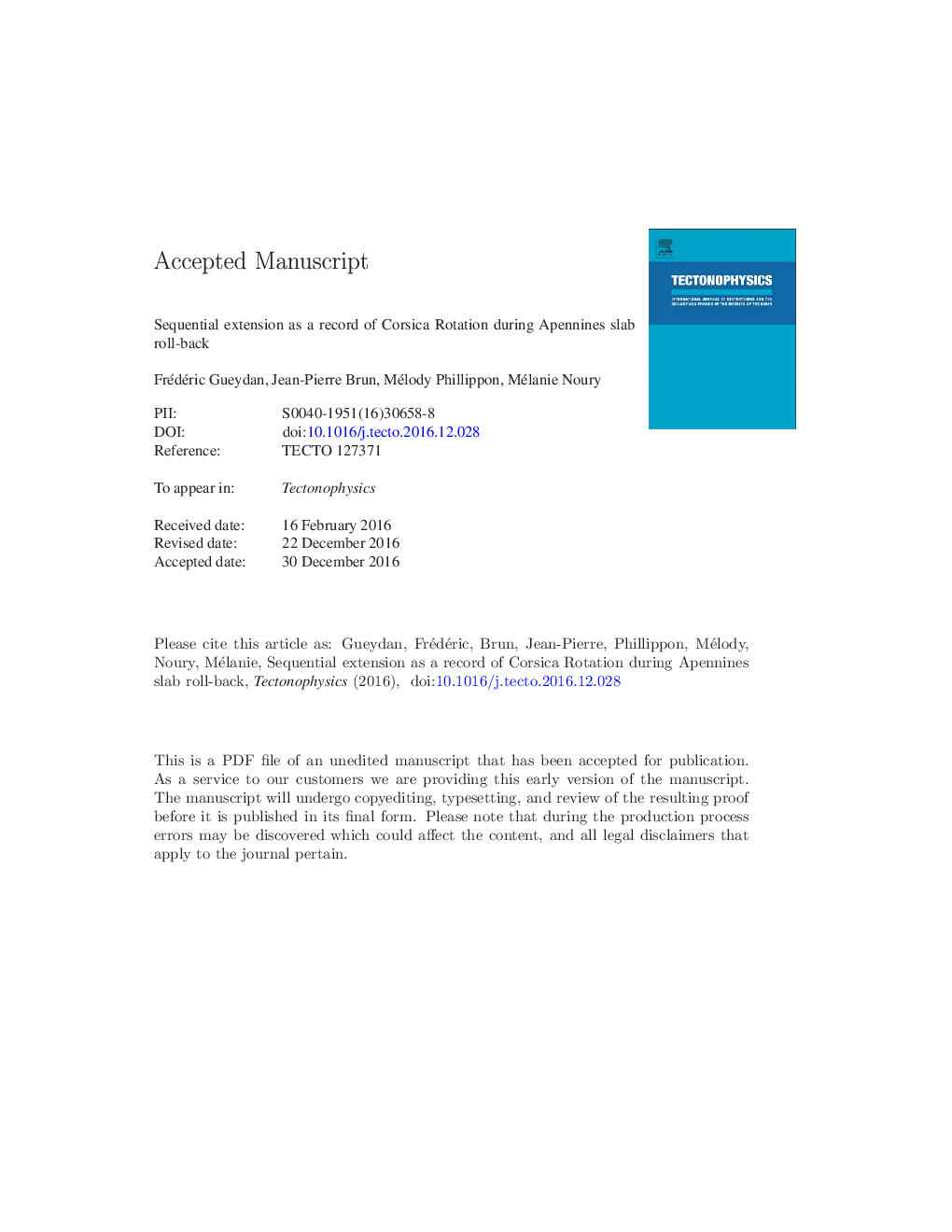| کد مقاله | کد نشریه | سال انتشار | مقاله انگلیسی | نسخه تمام متن |
|---|---|---|---|---|
| 5781591 | 1636695 | 2017 | 49 صفحه PDF | دانلود رایگان |
عنوان انگلیسی مقاله ISI
Sequential extension as a record of Corsica Rotation during Apennines slab roll-back
ترجمه فارسی عنوان
فرمت پیوندی به عنوان یک رکورد از چرخش کورسا در طول آپننن اسلب برگرداندن
دانلود مقاله + سفارش ترجمه
دانلود مقاله ISI انگلیسی
رایگان برای ایرانیان
کلمات کلیدی
مدیترانه مرکزی، امتداد، رام تخت، پشت حوضچه پیگگی، رول عقب،
موضوعات مرتبط
مهندسی و علوم پایه
علوم زمین و سیارات
فرآیندهای سطح زمین
چکیده انگلیسی
The Mediterranean geodynamic system is an exceptional natural laboratory to study the complexities of back-arc extension during subduction rollback. Corsica is a key locality that recorded the Alpine subduction-collision history followed by 30 Ma of the Apennines slab rollback, responsible for the successive opening, from West to East, of the Liguro-Provençal basin and the Tyrrhenian Sea. The overall strain pattern of the Alpine metamorphic units of Alpine Corsica is studied through a synthesis of i) available geological maps, ii) geochronological data and iii) newly acquired structural data relative to successive events of ductile and brittle extension. Three main stages of extension are recorded: 1/ Syn-metamorphic Oligocene extension accommodated by N140° trending ductile shear zones, that correspond to the reactivation of a major Alpine thrust; 2/ Burdigalian ramp-flat extension with N60°-70° trending fault zones that controlled the deposition of onshore piggy-back basins (e.g. St Florent basin), and 3/ Serravalian N-S trending fault zones. From a geodynamical point of view, these successive extensional deformations in Alpine Corsica can be correlated to the history of the Apennines slab rollback. The two first stages are related to a southeastward rollback of the Appennines slab that successively triggered: 1/ Continental rifting in Oligocene leading to the opening of the Liguro-Provençal basin and 2/ Burdigalian extension with N60°-70° trending fault zone, oblique to the Alpine thrust that, after a counterclockwise rotation of the Corso-Sardinian block, became unable to accommodate extension. Finally, the third stage that gave NS-trending fault zones developed in Serravalian, at the onset of Tyrrhenian rifting, related to an eastward rollback of the Apennines slab, as a response of slab tearing in Sicily.
ناشر
Database: Elsevier - ScienceDirect (ساینس دایرکت)
Journal: Tectonophysics - Volumes 710â711, 25 July 2017, Pages 149-161
Journal: Tectonophysics - Volumes 710â711, 25 July 2017, Pages 149-161
نویسندگان
Frédéric Gueydan, Jean-Pierre Brun, Mélody Phillippon, Mélanie Noury,
